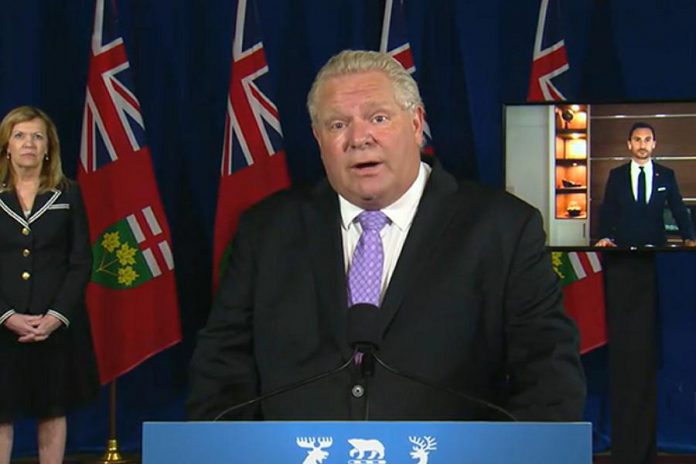
The Ontario government is requiring school boards to prepare for three scenarios for the reopening elementary and secondary schools in September: a normal school day routine with enhanced public health protocols, a modified school day routine that allows for physical distancing, and at-home learning.
Ontario Premier Doug Ford announced the province’s “school safety plan” on Friday (June 19) at a media conference at Queen’s Park, along with health minister Christine Elliott and education minister Stephen Lecce (who participated remotely).
“Nothing is more important than protecting our kids in this province,” Ford said. “This plan takes the best medical advice available from our public heath experts to ensure every school board and every school is ready to ensure students continue learning in the safest way possible.”
While the scenario that a school board chooses will depend on the public health situation come September, the government is asking each school board to prepare their own safety plans that include the following three scenarios:
- A normal school day routine with enhanced public health protocols. In this scenario, students will attend classrooms every school day with standard class sizes in place.
- A modified school day routine that allows for physical distancing and limits the number of students and teachers in contact at any one time. In this scenario, there will be a limit of 15 students in a classroom, and timetables would be implemented so students remain in contact only with their classmates and a single teacher for as much of the school day as possible. This scenario would also require alternate day or alternate week delivery to a segment of the class at one time.
- At-home learning. In this scenario, where school closures are extended due to COVID-19 or where some parents choose not to send their child back to school because of health and safety, school boards would offer remote education, delivered online as much as possible, as well as minimum expectations for students to have regular direct contact with their teacher at the same time.
The government is also instructing school boards to plan for an adapted delivery model that could include alternate day or alternate week attendance (as in the second scenario above), staggered bell times and recess, and different transportation arrangements.
Ford says the safety plan for schools was created following extensive consultation with Ontario’s chief medical officer of health, health experts on the government’s COVID-19 command table, medical experts at The Hospital for Sick Children, education sector partners, front-line workers, and parents and students.
Education minister Lecce said parents who do not feel comfortable having their children physically return to school will always have the choice to pursue online remote learning.
School boards have until August 4th to submit their safety plans to the Ministry of Education, which will provide all boards with an opportunity to share their draft plans and seek feedback from a formalized table of medical experts that the ministry will be convening.
School boards will be required to outline their safety plans with parents and students prior to the start of the 2020-21 school year, provide guidance on health and safety measures and protocols, and share any other changes that will be implemented when schools open in September.
The government announced it is investing an additional $736 million in public education for the 2020-21 school year. The funding, which the province says is the largest investment in public education in Ontario’s history, will increase the average amount of funding per pupil to $12,525, an increase of $250 over the previous year.
The government also announced $4 million in net new funding for cleaning, cleaning protocols, and financial support to hire additional custodial staff in September to ensure schools are safe.


























